Art of the Genre: The Drow
Two roads diverged in a wood, and I – I took both…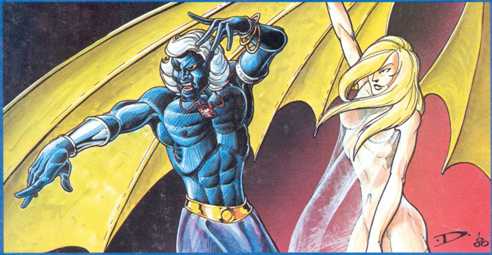
Today I follow the rise of the Drow, both in their conceptual purpose and the art that has defined them.
In modern fantasy there have been dark elves as far back as Tolkien when he speaks of Eol the Dark Elf who forged Anguirel the blade used by Beleg Strongbow in the Hurin mythos. Yet, corrupted elves, and the mystery they hold, have become something else entirely when placed in the framework of role-playing games.
Somewhere, in some nearly forgotten time, Gary Gygax read something, perhaps Funk & Wagnall’s Unexpurgated Dictionary, stating: “[Scot.] In folk-lore, one of a race of underground elves represented as skilful workers in metal. Compare TROLL. [Variant of TROLL.] trow“ and he used it to create the absolutely fantastic D&D monster we now call Drow.
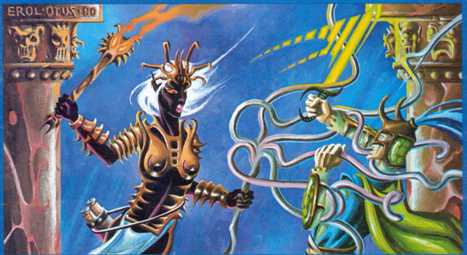
Ernie was so impressed with the Drow he broke off the adventure and fled, but that only enforced Gary’s vision, something Ernie recounts as follows: “I know this; Gary was adamant that the only Good aligned Drow would have to be one that was insane, it is not in their nature.”
This leaves us with the foundation, a source indicating ‘evil’ in the Drow, and the initial looks at this race done by artists like Jeff Dee, Erol Otus, and Bill Willingham [who made the Drow so evil in his rendition they seemingly have killed Spiderman, Captain America, and Iron Man… seriously, look close!] reinforce this vision.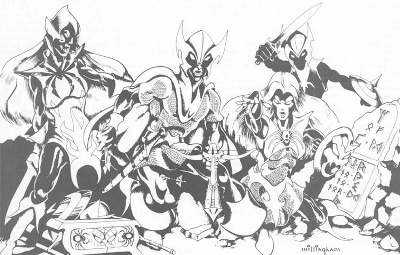
Still, as with all innately evil creations, there’s a certain romance involved, something untouchable and forbidden in it. When the Against the Giants modules gave way to D1-2: Descent into the Depths of the Earth, D3: Vault of the Drow, and Q1: Queen of the Demonweb Pits, the Drow were further galvanized into the mindset of players as something they wanted more of.
The Drow were mentioned vaguely in monster guides like Fiend Folio and Monster Manual, but the love affair didn’t truly begin until TSR and Gygax released Unearthed Arcana which allowed players to create the race as characters in 1985.
This seems counter intuitive to Gygax’s vision, but nonetheless it happened, and in that year my best friend created his first playable Drow, Evendrad, as did thousands of other players nationwide, and life quickly changed for all DMs and players.
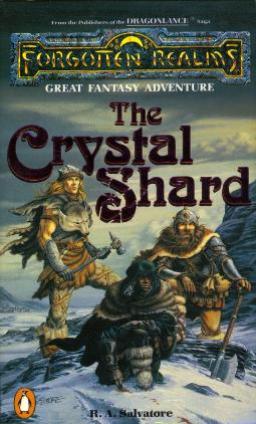 This transformation from villain to hero is reminiscent to me of Terry Goodkind’s amazing ability to make things you hate in a fantasy series turn into things you love, [ala the Gar, Mord-Sith, D’Hara, etc] but nothing defined this Drow transformation better than another fantasy author in the late 80s, R.A. Salvatore.
This transformation from villain to hero is reminiscent to me of Terry Goodkind’s amazing ability to make things you hate in a fantasy series turn into things you love, [ala the Gar, Mord-Sith, D’Hara, etc] but nothing defined this Drow transformation better than another fantasy author in the late 80s, R.A. Salvatore.
Salvatore, in his gem of a starter novel, The Crystal Shard, gave TSR Drizzt Do’Urden, and the realm of fantasy soon adopted a new kind of hero. This Drow protagonist, twin scimitars and all, took what was once a monster and made it a champion readers loved.
For Drizzt, Larry Elmore was the first to help turn the visual tide, his depiction of him hooded and brown-skinned in the frozen north of Icewind Dale coming at almost the same time as Keith Parkinson did his half-drow in Waterdeep and the North. For the first time the Drow weren’t ebon black or royal blue, another level of depth coming to their mystery and evolution.
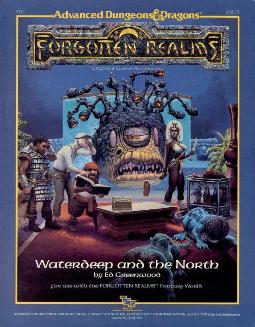
Well said, and as I thought about Drizzt and his impact, I decided to ask R. A. Salvatore his thoughts on the subject of the Drow. Showing him Ernie’s quote, I wondered if he echoed Gygax’s thoughts concerning evil Drow and he replied: “I wouldn’t say that I’m a “firm believer,” but generally speaking, Drow are monsters, and darned good ones.”
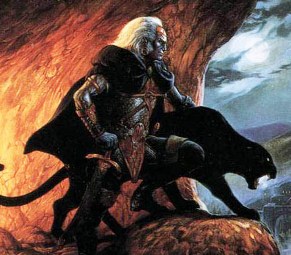
Talking with Ed about it, he recounted the following concerning what his purpose was in the grand scheme: “As a freelancer, I was asked to write Drow of the Underdark (the original, 2E sourcebook with that title) after doing the Menzoberranzan Boxed Set. For that project, I was asked to create some Drow gods (enter Vhaeraun and Eilistraee), give Gary’s “Elder Elemental God” a name (Ghaunadaur), specifically to give “good” Drow a deity and a role on the surface world, and to at least hint at Drow technology (as opposed to magic), as well as signaling that not all Drow society followed the matriarchal Lolth model.”
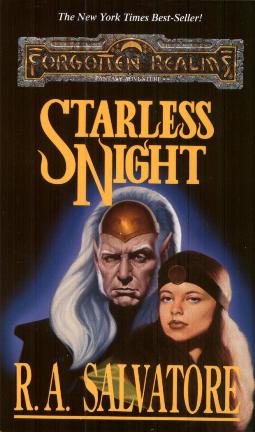
Whatever the inception, players didn’t care, and now having good gods, and with Drow moving to the surface in greater numbers in the Forgotten Realms, the shift was on. By the mid 90s, the Drow were everywhere, and Salvatore just continued the process with series after best-selling series as Drizzt became the most recognizable icon of his race. TSR was also pushing the Drow envelope with computer games like Neverwinter Nights 2 giving both Drizzt and his people even more influence.
Drow art was also advancing, the ‘aged’ Drow of Easley giving way to perhaps the greatest offender to Drow lovers everywhere, Robh Ruppel, and his infamous Starless Night cover where Drizzt is actually white-skinned. No offense to Robh, who was himself trying to follow in Easley’s concept work, but there is little doubt that this is the most loathed of Drow versions on gaming chat sites.
By the time Wizards of the Coast bought TSR and created D&D 3 Edition, a much needed Drow facelift was in order, and to do this they turned to Todd Lockwood. Lockwood’s talent reinvigorated the Drow frame, and WotC introduced new Lockwood covers for the entire Drizzt series that brought an Elmore reminiscent softer and deep brown-black skin with the 3E lithe elf-body coming into play.
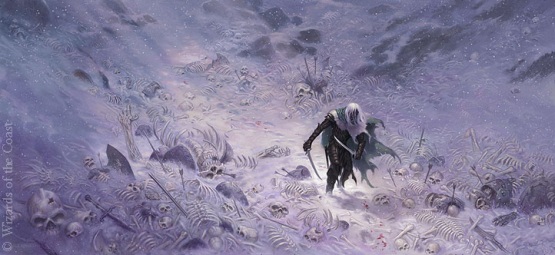
I commented to him that it was somehow ironic that he now made a living painting Drow, and he agreed, as well as stating in a quip to R.A. Salvatore: “Yes, many old-timers have told me how you [Salvatore] ruined the game: now everyone wants to be an angsty “good guy” Drow who fights with two swords…”
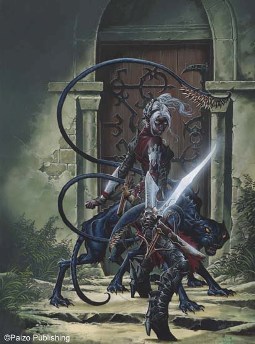
Paizo was also moving forward with Pathfinder by the middle decade, and their third great adventure path released a fresher evil version of their Drow in Second Darkness. These modules brought the next evolution to the Drow, Steve Prescott’s more ‘violet’ version depicting what Paizo saw Drow to be in their new world of Golarian and it was a grand success.
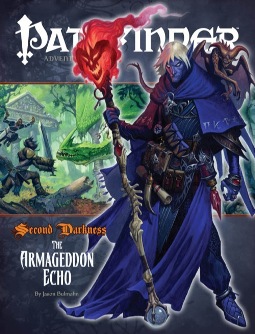
So, what have we learned? Well, like anything that becomes beloved in fantasy, there are many versions and styles involved over the course of
thirty years. Are today’s Drow what Gygax envisioned? No, but again, like any good Dungeon Master, he allowed the players free will to choose, and when they did the Drow were changed forever.
Whether you play a twin-sword Drizzt clone, sexy priestess of Eilistraee, or just use Drow to vex your players on occasion as a DM, they’ve become an invaluable part to role-playing lore.
Ive always preferred the black, not purple, not blue, not brown, Drow.
It took me years upon years to break down and read some of the Drizzt stuff, simply because I couldnt stand the “good Drow” idea.
Drow are evil Dangit. So evil they dont want you dead. They want you to suffer. Then die. Then suffer some more.
Not because they hate you, or dislike you, or even bear you any ill will (so to speak) at all, but simply because your plight might entertaining. If only for a moment.
I guess, I think Malus Darkblade is a better example of what a “drow” (or dark elf, or Teir’dal, or Druchii, or whatever name you want to give to their incarnation in whatever world/game setting) is than what Bob Salvatore wrote.
(One other thing – Parkinson’s “Queen of the Spiders” cover is smoking)
TW: Indeed, the concept of Drow do seem to be best served ‘evil’, but I have to admit, although I’ve only ever played one Drow in all my gaming years [who was not only crazy, but horribly evil] I have had fun playing next to an outcast ‘good’ Drow family line played by my friend and DM Mark.
I got a great quote from James Jacobs after this went to print that I’ll include for you that might better show the Paizo Drow view: “One of the big things we wanted to do with drow in Second Darkness was to really re-cast them in the role of bad guy. Until Second Darkness came out, we’d been VERY careful to avoid having any drow in our adventures or products—we wanted to have their debut hit at the right time with the right product. Focusing an entire Adventure Path on them seemed like a great way to reveal them.
We very much looked to Gygax’s vision of them as full-on monsters, though, and deliberately hooked them up with an entire pantheon of demon lords to worship; the drow of Golarion don’t really have one deity in particular that they worship above all others. Each drow house has its own demon lord patron, though, and that lets us really do some fun stuff with the drow, modeling their society to a certain extent off of the various demon lords. To this date, we’ve avoided putting any non-bad guy drow in Golarion, and we’ll probalby never have a good aligned drow—that’s too much the Salvatore model, and we don’t want to encroach on that incarnation of them. Drow in Golarion are sadistic, evil, hateful things through and through.”
Oh, and as for the ‘Queen of Spider’… well, the real question is, has there ever been a Parkinson cover that wasn’t ‘smoking’? 🙂 And, a second note, I bought The Queen of Spiders just for that cover even though I had all the original modules bound together inside, so I do get your point.